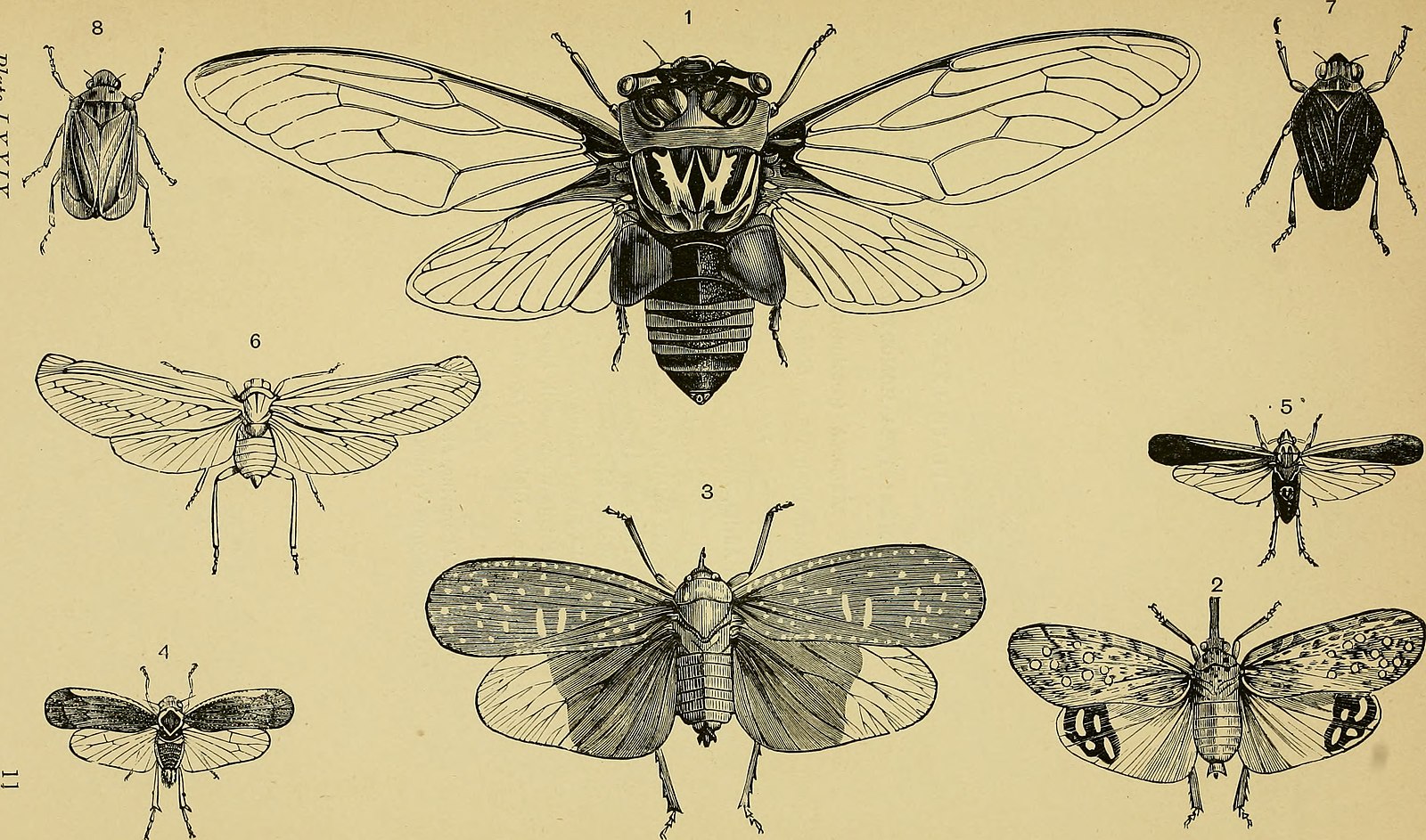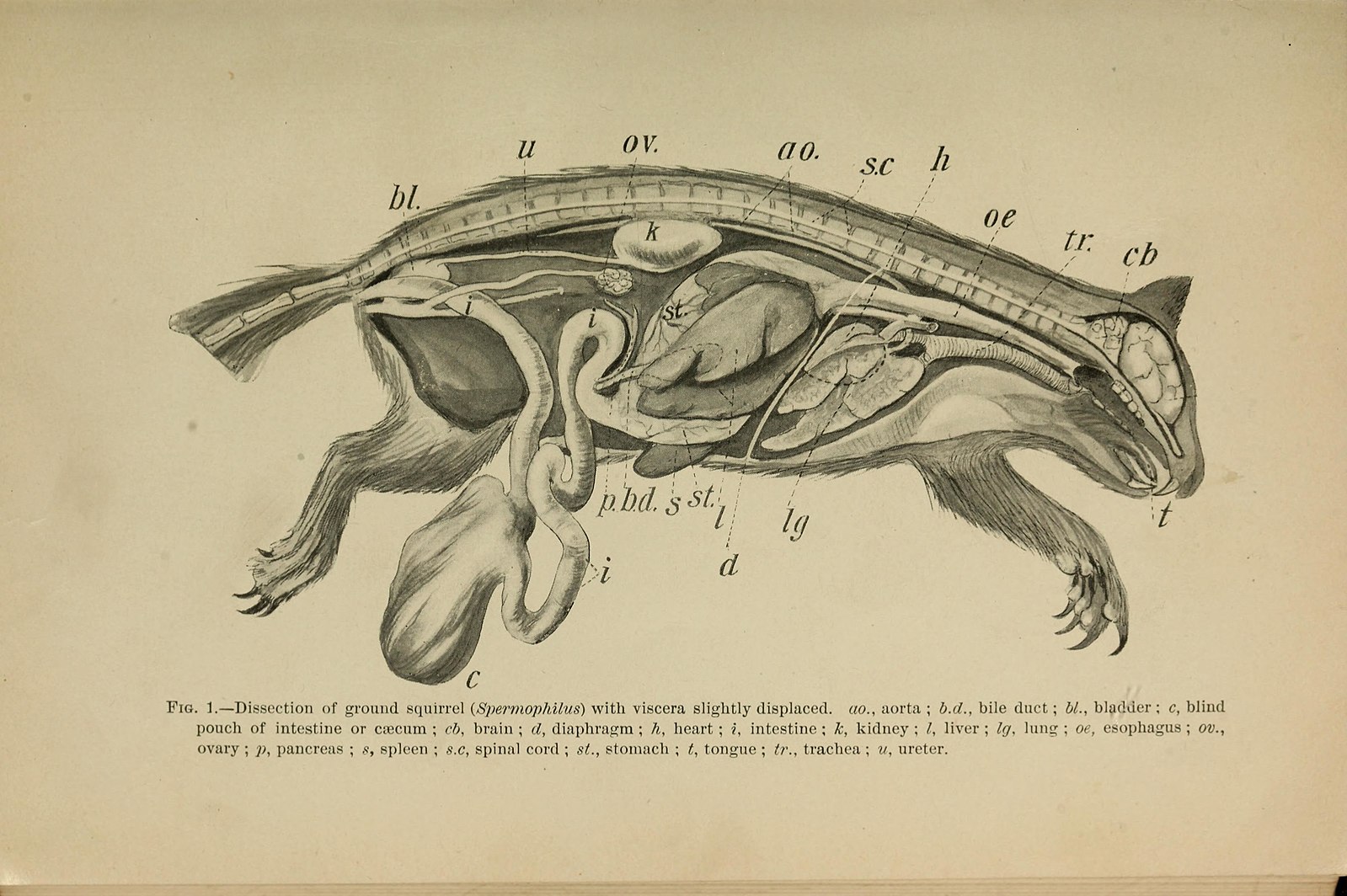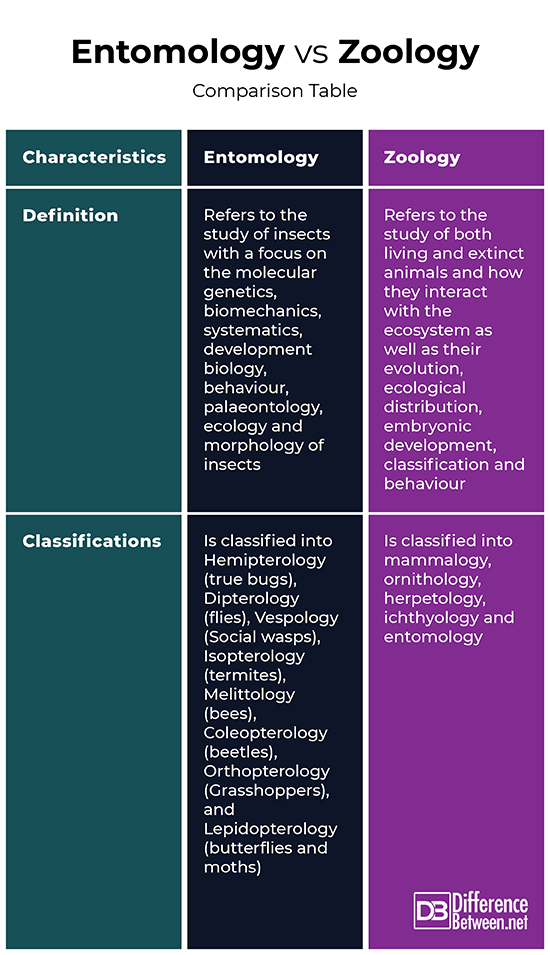Difference Between Entomology and Zoology
There are over a million animal and plant species in the world. To try and understand each, scientists have taken it upon themselves to study these living things. To make it easier, classifications based on the type of study have been put up. These include entomology, microbiology, botany, ecology, biochemistry, ornithology, andrology, limnology and zoology, just to name a few. Each of these covers specific plant or animal genres. In this article, we will focus on entomology and zoology.

What is Entomology?
Derived from the ancient Greek word, entonom meaning insect, this is the study of insects. It is a subclassification of zoology that focuses on molecular genetics, biomechanics, systematics, development biology, behaviour, palaeontology, ecology and morphology of insects.
Insects, which are more than 1.3 million species have different levsl of interactivity with human beings as well as other living things. The study of insects dates back in the 19th and 20th centuries, with William Kirby being regarded as the father of entomology who published an entomological encyclopedia, popularly known as Introduction to Entomology, in collaboration with William Spence.
Entomologists often specialize in a one order which have different subspecialties such as Hemipterology (true bugs), Dipterology (flies), Vespology (Social wasps), Isopterology (termites), Melittology (bees), Coleopterology (beetles), Orthopterology (Grasshoppers), and Lepidopterology (butterflies and moths).

What is Zoology?
Derived from the Greek word animal, this is the study of both living and extinct animals and how they interact with the ecosystem. It includes any scientific knowledge about animals such as evolution, ecological distribution, embryonic development, classification and behaviour.
The history of zoology dates back to the ancient Greco-Roman world and the biological works of Aristotle. It has now become a much-sought scientific discipline.
Branches of zoology include zoography, comparative anatomy, animal physiology, ethology and behavioural ecology. It is also classified into mammalogy, ornithology, herpetology, ichthyology and entomology.
Similarities between Entomology and Zoology
- Both involve the study of living organisms
Differences between Entomology and Zoology
Definition
Entomology refers to the study of insects with a focus on molecular genetics, biomechanics, systematics, development biology, behaviour, palaeontology, ecology and morphology of insects. On the other hand, zoology refers to the study of both living and extinct animals and how they interact with the ecosystem as well as their evolution, ecological distribution, embryonic development, classification and behaviour.
Classifications
Entomology is classified into Hemipterology (true bugs), Dipterology (flies), Vespology (Social wasps), Isopterology (termites), Melittology (bees), Coleopterology (beetles), Orthopterology (Grasshoppers), and Lepidopterology (butterflies and moths). On the other hand, zoology is classified into mammalogy, ornithology, herpetology, ichthyology and entomology.
Entomology vs. Zoology: Comparison Table

Summary of Entomology and Zoology
Entomology refers to the study of insects with a focus on molecular genetics, biomechanics, systematics, development biology, behaviour, palaeontology, ecology and morphology of insects. On the other hand, zoology refers to the study of both living and extinct animals and how they interact with the ecosystem as well as their evolution, ecological distribution, embryonic development, classification and behaviour. Both, however, involve the study of living organisms.
- Difference Between Profit Center and Investment Center - July 2, 2022
- Difference Between Anti-Trust and Anti-Competition - June 6, 2022
- Difference Between Stocktaking and Stock Control - June 6, 2022
Search DifferenceBetween.net :
Leave a Response
References :
[0]Knowledge Flow. Zoology: An Introduction. Knowledge Flow, 2017. https://books.google.co.ke/books?id=gvg9DgAAQBAJ&printsec=frontcover&dq=zoology&hl=en&sa=X&ved=2ahUKEwjt-9ujtubqAhUBzYUKHcfMDRAQ6AEwAHoECAIQAg#v=onepage&q=zoology&f=false
[1]Dennis S. Hill. Pests of Stored Foodstuffs and their Control. Springer Science & Business Media, 2002. https://books.google.co.ke/books?id=s_6oopm-E4AC&pg=PP9&dq=Difference+between+Entomology+and+Zoology&hl=en&sa=X&ved=2ahUKEwjizbiHtebqAhXV3oUKHXbDBacQ6AEwBnoECAcQAg#v=onepage&q=Difference%20between%20Entomology%20and%20Zoology&f=false
[2]Q. Ashton Acton. Issues in Life Sciences—Acarology, Arachnology, and Entomology: 2012 Edition. Scholarly Editions, 2013. https://books.google.co.ke/books?id=4FejQThkwbIC&pg=PA179&dq=Difference+between+Entomology+and+Zoology&hl=en&sa=X&ved=2ahUKEwjizbiHtebqAhXV3oUKHXbDBacQ6AEwAXoECAQQAg#v=onepage&q=Difference%20between%20Entomology%20and%20Zoology&f=false
[3]Image credit: https://commons.wikimedia.org/wiki/File:Animal_forms;_a_second_book_of_zoology_(1902)_(17575724343).jpg
[4]Image credit: https://commons.wikimedia.org/wiki/File:Elementary_text-book_of_entomology_(1892)_(21041412910).jpg
